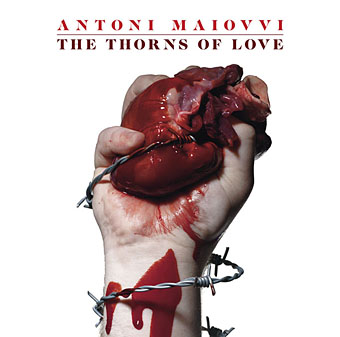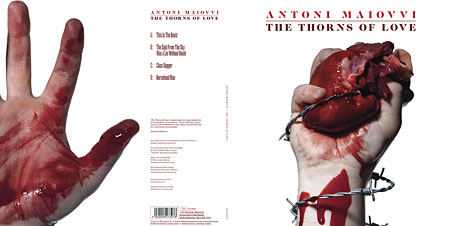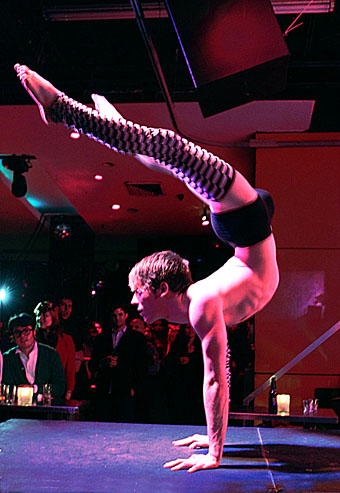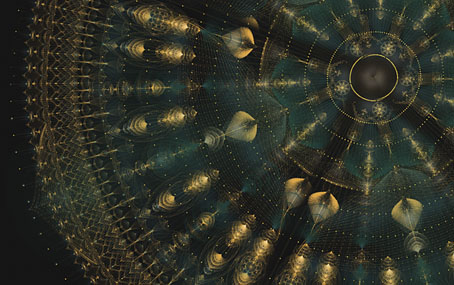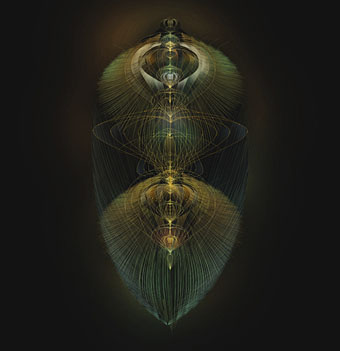The Thorns of Love CD cover.
One of the consequences of having been so productive of late is having less time to update my web pages. The CD design section is now a year out of date so I’ll be trying to amend the situation as time allows.
The Thorns of Love by Antoni Maiovvi was released last month and is another of my designs for the Caravan label. The attention-grabbing photos are by Liz Eve whose work adorned earlier designs for 2562 and Pinch. It’s great to work with quality images like these, and Liz’s gory pictures are an ideal match for Maiovvi’s music, a series of lengthy compositions in a style which might be described as Giorgio Moroder scoring a Dario Argento horror movie. This is a fantastic album and the CD’s fourth track, Class Dagger, is one of the best new electronic pieces I’ve heard this year.
The Thorns of Love vinyl sleeve.
The Thorns of Love was released on double-12″ vinyl as well as CD so I’ve also posted the vinyl art, something I need to go back and do for previous designs. Vinyl isn’t dead by any means, and it’s a pleasure to work for the larger format.
• Antoni Maiovvi interviewed at Electrofreaks
Elsewhere on { feuilleton }
• The album covers archive
Previously on { feuilleton }
• Dead on the Dancefloor

